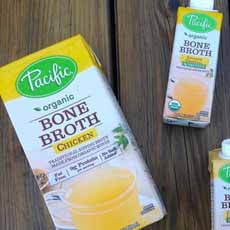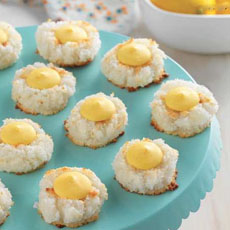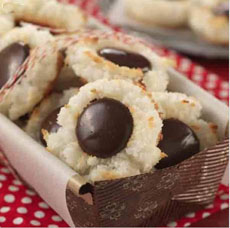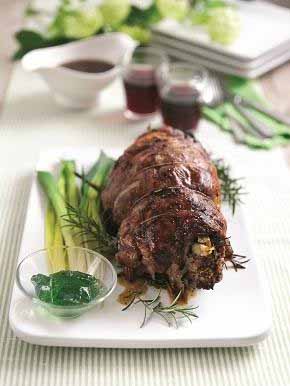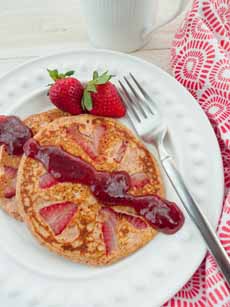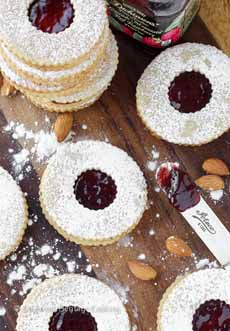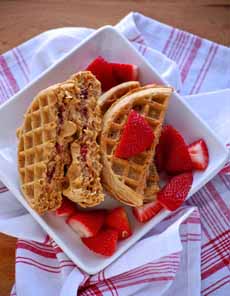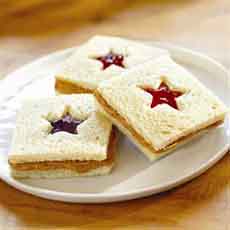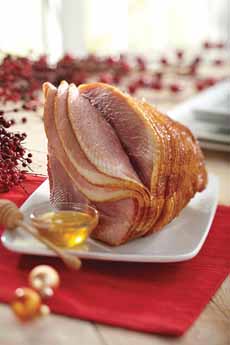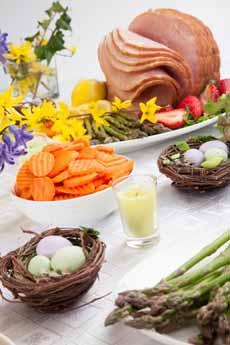|
We’ve already done a turn on the the history of peanut butter. Today it’s the history of jam and jelly.
Before we start on its history, check out the different types of fruit spreads: not just jam, jelly, and preserves, but chutney, conserve, curd, fruit butter, and marmalade.
The history of jam and preserves begins with the history of food preservation. After all, it was only a few centuries ago that technology was created to store foods over long periods.
INTRODUCTION: THE HISTORY OF PRESERVING FOOD
By the Paleolithic period 2.6 million years ago*—also called the Stone Age, and marked by the earliest known use of stone tools—people were preserving food. They had already realized that if they could save food they collected in times of plenty, it would make survival easier during times of scarcity. They could also avoid having to constantly roam greater and greater distances to look for fresh food.
The earliest natural methods of preserving food were:
Using cold, in areas with ice and snow-packed in caves or cellars, or simply frozen under the ice.
Drying—eliminating the moisture from food by exposing it to the sun, applying pressure, or smoking (bacteria and mold need moisture to live). Evidence shows that Middle Eastern and Asian cultures actively dried foods as early as 12,000 B.C.E. [source]
The use of salt for preserving food came later in prehistory. Beginning in the Bronze Age (ca. 3200 B.C.E. to 600 B.C.E.), many salt roads—trade routes overland and via rivers—carried salt to trade in regions that had none.
Honey, which has no moisture so can preserve foods enclosed in it, has been used for 8,000 years (6000 B.C.E.) at least. A rock painting from that time shows people harvesting honey. Similarly, syrups of honey and sugar were used as preservatives. (The earliest “candies” are considered to be dates and figs in syrup.)
Preservation with honey or sugar was well known to the earliest cultures. Fruits kept in honey were commonplace.
In ancient Greece, quince was mixed with honey, dried somewhat, and packed tightly into jars. The Romans improved on the method by cooking the quince and honey together, producing a meld of the ingredients (preserves!)].
Here’s more on the preservation of foods from The National Center For Home Food Preservation..
The first steps toward modern preservation methods were spurred by Napoleon Bonaparte in 1785. He needed to send food with his armies that wouldn’t spoil but preserve the food they needed.
Thus canning came to be, enabling fruits and vegetables in all their forms to be preserved until the next year’s bounty, followed somewhat later by mason jars for home cooks.
Here’s the history of canning and the history of mason jars.
THE HISTORY OF JAM, JELLY & PRESERVES STARTS WITH THE HISTORY OF SUGAR
Credit cooks in the Middle East as the first to make jam and preserves, though historians can’t pinpoint the date. It was before the 11th century; we just don’t know how much before.
It may have been the 4th century or earlier. Recipes for fruit preserves (using honey) can be found in the oldest cookbook to survive from antiquity: De Re Coquinaria (“The Art of Cooking”).
The book is believed to be published in the late fourth or early fifth century, and is attributed to “Marcus Gavius Apicius.”*
________________
*The Paleolithic is considered to have ended around 10,000 B.C.E.
†This is considered a pseudonym of the author(s), honoring a famous epicure by that name who lived some four centuries earlier.
Sugar Travels From The Pacific To The Middle Eaast
While honey could be used to sweeten jams and preserves, it was sugar that became the sweetener of preference.
The people of New Guinea in the South Pacific domesticated sugar cane some 10,000 years ago. It was later planted in India, where growers in the Ganges Delta became adept at refining the sweet cane juice into crystallized sugar.
Darius The Great (549-485 B.C.E.) brought sugar cane back to Persia following his invasion of India. Persia became a prolific sugar-producing region, and Middle Easterners had lots of it. Not so, the countries to the north.
Jump to the 11th century and the Crusades.
Amazingly, sugar was only discovered by Western Europeans in the 11th Century C.E., as a result of the Crusades (1095 to 1291). Crusaders returning home talked of how pleasant the “new spice” was. The first recorded mention of sugar in England was in 1099 [source].
But it wasn’t cheap.
As an example, a record from 1319 C.E. cites sugar available in London at “two shillings a pound.” That’s about $50 per pound in today’s money.
So jellies, preserves, and other sugar-based foods would have been restricted to royalty and the wealthy.
Marmalade is believed to have been created in 1561 by the physician to Mary, Queen of Scots. He crushed oranges and sugar as a remedy for her seasickness.
For more pleasant uses, royal sweet tooths kept royal kitchen staff busy.
The magnificent feasts of Louis XIV always ended with marmalades and jellies served in silver dishes, eaten with silver spoons (so don’t feel guilty about dipping into the jar with your stainless steel flatware).
Not that Louis and his acquaintances watched their pennies, but sugar wasn’t cheap. It didn’t trickle down to the bourgeoisie (or the British middle classes
As an example, we have a record from 1319 C.E. citing sugar available in London at “two shillings a pound.” That’s about $50 per pound in today’s money.
Unless money knew no boundaries, sugar was a luxury.
Finally, with the enormous expansion of industry and opportunity starting with the Industrial Revolution of the 19th century, most people could afford sugar for their coffee and tea.
Why Jelly Arrived Later
Jelly came centuries later. It required gelatin to set it. (In modern times, pectin derived from fruits is used.)
Gelatin (also spelled gelatine) had been made since ancient times by boiling animal and fish bones and connective tissues. It was a laborious process, undertaken largely by the kitchens of the wealthy, which had the staff resources to undertake it.‡
Aspic, made from meat or fish stock, appears in Egyptian wall paintings. It seems to have dropped from sight, sometime after the fall of Ancient Egypt (30 B.C.E.) and the sack of Rome by the Visigoths in 410 C.E., which led to more sacking by other peoples and the Dark Ages.
No one had enough to eat of the basics, much less laboriously crafted fare.
|
|

[1] Jelly is clear. How about this pear jelly recipe (photo © Things We Make).
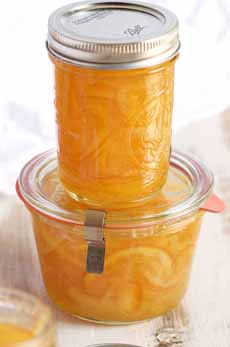
[2] Marmalade has a clear base, but is different from jelly in that it includes pieces of the fruit. Try this orange marmalade recipe (photo © The Suburban Soapbox).
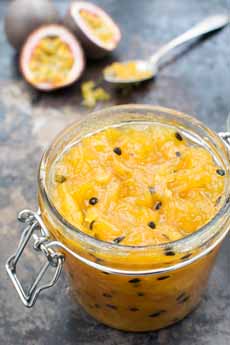
[3] Jam is made from crushed fruit. For some tropical pizzazz, make this pineapple-passionfruit jam recipe (photo © The Flexitarian).

[4] Preserves differ from jam, in that the fruit is cooked whole (in the case of small fruit like berries) and is recognizable its syrup. In cherry season, make this cherry preserves recipe (photo © Cilantropist).

[5] In a curd, the cooked fruit is puréed and combined with butter into a creamy spread. Try this lemon curd recipe (photo © Saving Dessert).
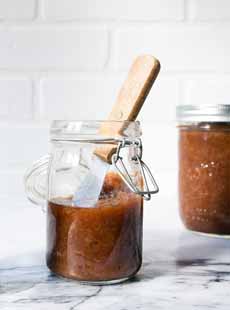
[6] In an interesting twist, products called fruit butter have no butter or other dairy. This slow cooker apple butter recipe is a great starter recipe for fruit butter (photo © Dessert For Two). See many more types of fruit spreads in our Jam & Jelly Glossary.
|

